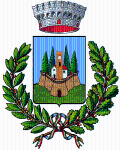Descrizione
Nell’ anno 303, al momento del martirio sotto l’imperatore Diocleziano, il corpo del Santo fu deposto in una grotta naturale sulla parete rocciosa a monte dell’edificio. Successivamente, nell’alto medioevo, fu realizzato il tempietto di forma ottagonale riconoscibile nella parte inferiore in pietra calcarea dell’Acqua Borra.
Il ricordo più antico di una “ecclesia Sancti Ansani” risale all’anno 650 mentre nell’anno 867 l’oratorio è citato in una donazione del Conte Winigis all’Abbazia della Berardenga.
Molti secoli dopo, nell’anno 1107, per porre fine ad un lungo periodo di contrasti, i Vescovi incaricati concordarono la “traslazione”: la testa fu deposta nella Cattedrale di Arezzo, il resto del corpo nel Duomo di Siena. L’edificio fu nel contempo ampliato, inglobando quella parte della collinetta che per secoli aveva custodito le spoglie.
Dopo tempi di abbandono e rovina, nel 1505 i Savi Rettori della Sapienza in Siena concessero la giurisdizione all’allora Compagnia di S. Ansano che provvide alla riedificazione in laterizio come si presenta attualmente.
All’interno dell'edificio è visibile l’antico fonte battesimale un tempo alimentato da una sorgente d’acqua purissima che dissetava uomini e animali lungo un’antica strada romana.
Nell’anno 1995, su provvedimento del Magistrato, le contrade del Palio di Siena vollero manifestare la loro devozione collocando le bandiere. Nell’Anno Ansaniano 2003, celebrativo del XVII° centenario del martirio, fu realizzato il portone in bronzo opera dell’artista Roberto Joppolo recentemente scomparso.
Le ricorrenze più significative sono la Festa della Compagnia in programma la prima domenica di settembre”, l'anniversario del martirio, ogni primo dicembre e quello della traslazione del corpo, ogni sei di febbraio.
English version:
Saint Ansano, patron Saint of Siena, was martyred in 303 in the reign of Emperor Diocletian. His body was initially buried in a cave in a rocky outcrop east of Siena, just above the present memorial chapel at Dofana, the site of his beheading and martyrdom.
In the early Middle Ages, at a period known architecturally as Romano-Gothic, a small octagonal temple was built in limestone from Acqua Borra, a still functioning hot spring nearby. Its remains are identifiable in the rear base of the present brick structure.
The oldest record of an “ecclesia Sancti Ansani” (church of Saint Ansano) dates back to 650 while in the year 867 the oratory is mentioned in a report by Count Winigis to the Abbey of Beradenga.
Many centuries later, in 1107, to end lengthy controversy between the bishops concerned, the Saint’s head was transferred to Arezzo Cathedral and the rest of his body to the Duomo in Siena. The chapel was enlarged to incorporate that part of the outcrop that for centuries had housed his remains.
After its long abandonment and ruin, in 1505 the “Wise Rectors of Wisdom” in Siena authorised the then Company of Saint Ansano to rebuild the oratory in brick as it now stands.
Its ancient baptismal font was once fed by a spring of pure water that also quenched the thirst of travellers and animals passing by along an old Roman road.
In 1995, the “Contrade del Palio di Siena” showed their devotion to the Saint by a display of flags. “Anno Ansaniano 2003” celebrated the seventeenth centenary of his martyrdom with the installation of a fine bronze chapel door made by the late Roberto Joppolo. Further annual commemorations were established: the First Sunday of September for the Feast of the Company in his name; the First of December for the anniversary of his martyrdom; the Sixth of February for the anniversary of the transfer of his remains.
Modalità d'accesso
sempre aperto
Indirizzo
Punti di contatto
Ultimo aggiornamento: 4 marzo 2024, 12:42

